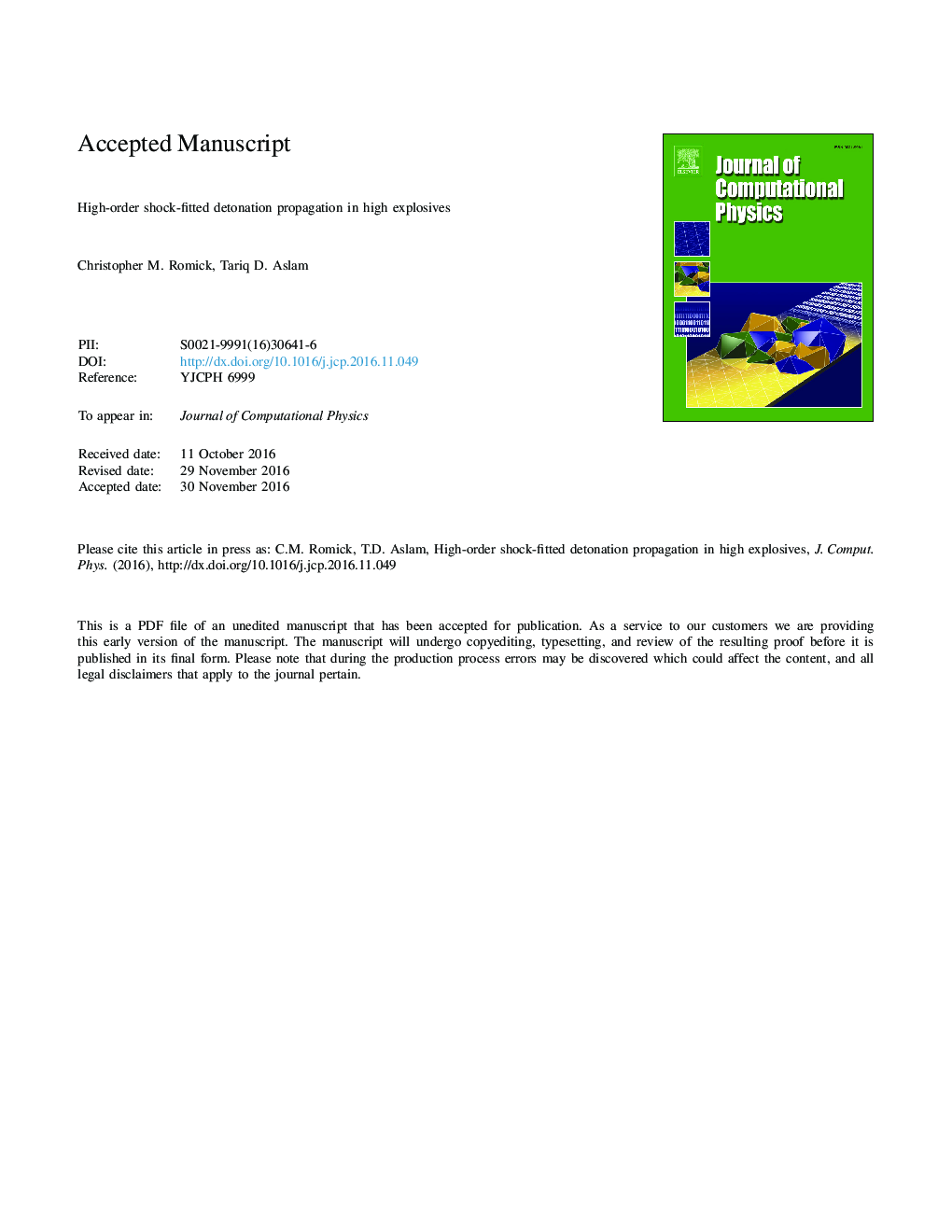| Article ID | Journal | Published Year | Pages | File Type |
|---|---|---|---|---|
| 4967666 | Journal of Computational Physics | 2017 | 52 Pages |
Abstract
A highly accurate numerical shock and material interface fitting scheme composed of fifth-order spatial and third- or fifth-order temporal discretizations is applied to the two-dimensional reactive Euler equations in both slab and axisymmetric geometries. High rates of convergence are not typically possible with shock-capturing methods as the Taylor series analysis breaks down in the vicinity of discontinuities. Furthermore, for typical high explosive (HE) simulations, the effects of material interfaces at the charge boundary can also cause significant computational errors. Fitting a computational boundary to both the shock front and material interface (i.e. streamline) alleviates the computational errors associated with captured shocks and thus opens up the possibility of high rates of convergence for multi-dimensional shock and detonation flows. Several verification tests, including a Sedov blast wave, a Zel'dovich-von Neumann-Döring (ZND) detonation wave, and Taylor-Maccoll supersonic flow over a cone, are utilized to demonstrate high rates of convergence to nontrivial shock and reaction flows. Comparisons to previously published shock-capturing multi-dimensional detonations in a polytropic fluid with a constant adiabatic exponent (PF-CAE) are made, demonstrating significantly lower computational error for the present shock and material interface fitting method. For an error on the order of 10m/s, which is similar to that observed in experiments, shock-fitting offers a computational savings on the order of 1000. In addition, the behavior of the detonation phase speed is examined for several slab widths to evaluate the detonation performance of PBX 9501 while utilizing the Wescott-Stewart-Davis (WSD) model, which is commonly used in HE modeling. It is found that the thickness effect curve resulting from this equation of state and reaction model using published values is dramatically more steep than observed in recent experiments. Utilizing the present fitting strategy, in conjunction with a nonlinear optimizer, a new set of reaction rate parameters improves the correlation of the model to experimental results. Finally, this new model is tested against two dimensional slabs as a validation test.
Related Topics
Physical Sciences and Engineering
Computer Science
Computer Science Applications
Authors
Christopher M. Romick, Tariq D. Aslam,
